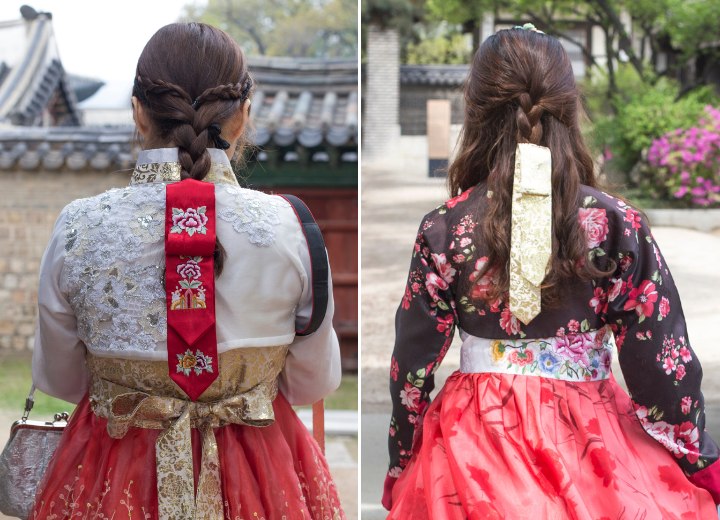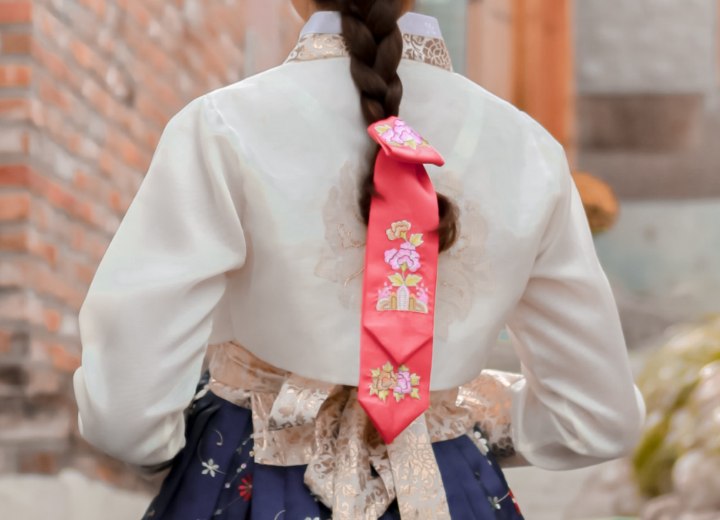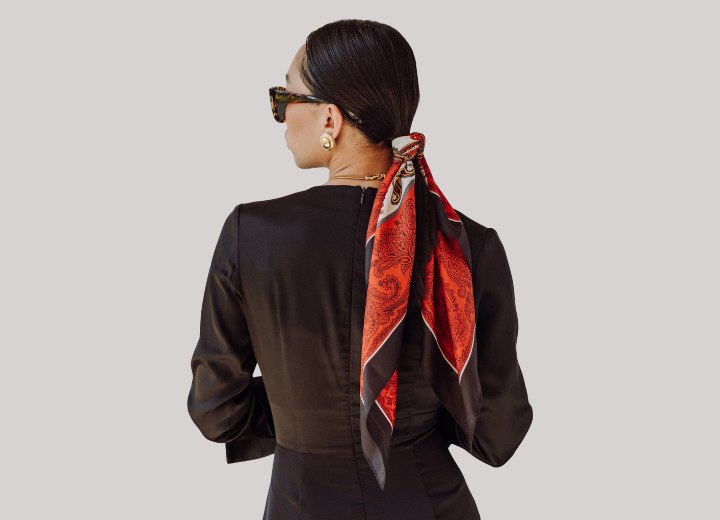Korean Daenggi

A: The name of this hair accessory is "daenggi." The Korean daenggi - 댕기 - is a traditional hair ribbon that has been worn in Korea for centuries. It is a long, narrow piece of fabric or a ribbon that is tied around the hair to keep it in place. The daenggi was an important part of the hanbok, a traditional Korean garment, and was used to enhance the overall attractiveness of the outfit.
During the Joseon Dynasty in Korea, there were strict rules and regulations regarding hairstyles. One of the most notable restrictions was a prohibition on cutting one's hair. This is why so many people, both men and women, had very long hair during the Joseon Dynasty. It was believed that by keeping their hair long, people could show their respect for their ancestors and their dedication to traditional Korean values.
The daenggi is typically made from silk, cotton, or ramie, and is available in a wide range of colors and patterns. It is often adorned with embroidery, tassels, or other ornamental elements, which enhance its beauty and elegance. The design of the daenggi can vary depending on the occasion and the age of the person wearing it. For example, young girls may wear a brightly colored daenggi with cute patterns, while older women may prefer a more subtle and elegant design.

Recently, there has been a growing interest in traditional Korean fashion, and because of this the daenggi has become increasingly popular among South Koreans. Fashion designers are incorporating the daenggi into their modern designs, thus creating a fusion of traditional and contemporary elements. The daenggi is also popular among K-pop stars, who wear it in music videos and on stage. This helps to spread Korean culture to a worldwide audience.
A daenggi attached to the end of the hair gives the illusion that the hair is longer than it actually is. In a way, this is similar to how you can make your hair look longer with a silk scarf, as illustrated below.

©Hairfinder.com
See also: Asian hair and hairstyles